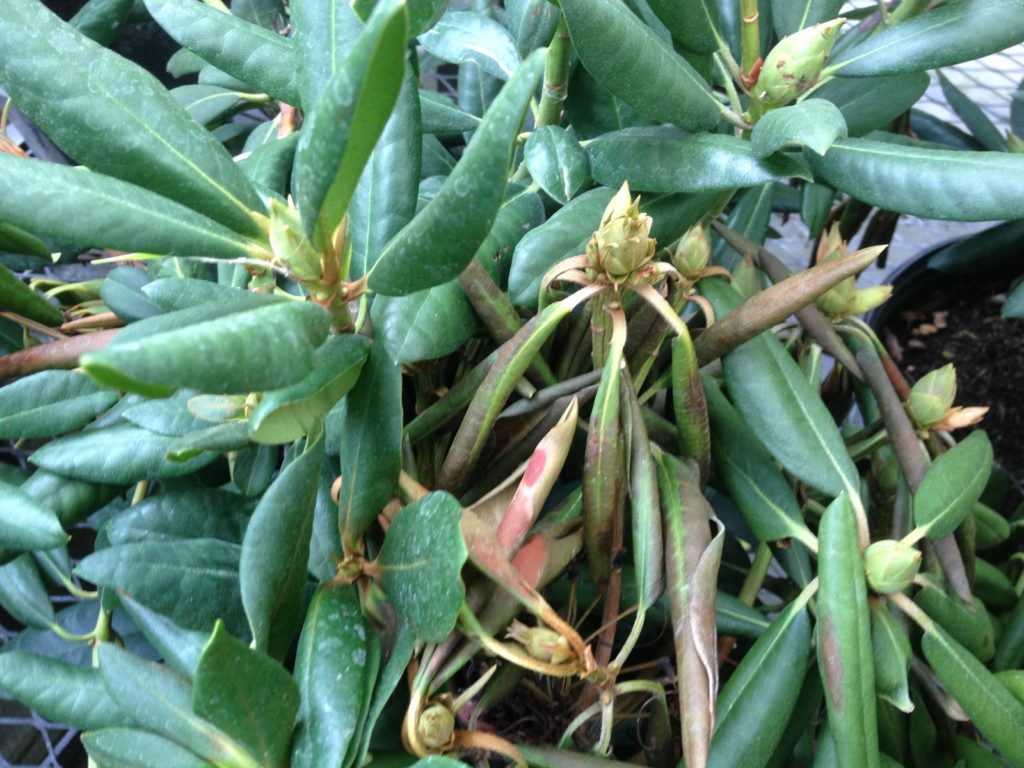
Phytophthora ramorum (Pr) (photo by Dr. Alan S. Windham)
Known as “sudden oak death”, this serious plant disease (Phytophthora ramorum) (Pr) from the West Coast kills oak and other species of trees. It has caused devastating effects on the oak populations in California, Oregon, and Washington, and is also present in Europe. Symptoms include bleeding cankers on the tree’s trunk and dieback of foliage.
Pr causes foliar blight/leaf spots over 80 susceptible landscape plants including: maple (Acer), Camellia, witchhazels (Hamamelis), mountain laurels (Kalmia), honeysuckle (Lonicera), magnolias (Magnolia), Japanese andromeda (Pieris), Douglas fir (Pseudotsuga), azaleas and rhododendrons (Rhododendron), lilac (Syringa), and viburnums (Viburnum).
All nursery plants from the West Coast are strictly inspected by the USDA for Pr. However, mistakes do happen. In the spring 2019 rhododendrons infected with Pr were shipped to some stores in Tennessee. Fortunately, the plants were quarantined and quickly destroyed.
Pr is a water mold fungus disease known as ramorum leaf blight, ramorum dieback, and sudden oak death (SOD). In certain areas of California and Oregon, Pr causes bark cankers on several oak (Quercus) and tan oak (Lithocarpus densiflorus). The bark cankers are fatal to oak and tan oak if the lesions girdle the trunk. Otherwise, trees that develop foliar blights and leaf spots do not die, but may serve as “reservoir” hosts for the pathogen.
Pr produces “bleeding” cankers on the trunks and branches. The formation of droplets of dark reddish brown liquid on the bark is not usually associated with bark cracks or insect holes. If the outer bark is scraped away, black zone lines surround dead areas in the inner bark. Once a bark canker girdles a branch or stem, the portion of the plant beyond that point dies. Tree death may occur within several months to several years after initial infection. Infected trees are attractive to opportunistic ambrosia and bark beetles, as well as secondary colonization by the sapwood decay fungus (Hypoxylon).
West coast nurseries are forbidden to ship susceptible host plants. All plants must pass inspection “free of Pr” can be shipped to other states. No chemical control measures are currently available.

 Posted in
Posted in 
